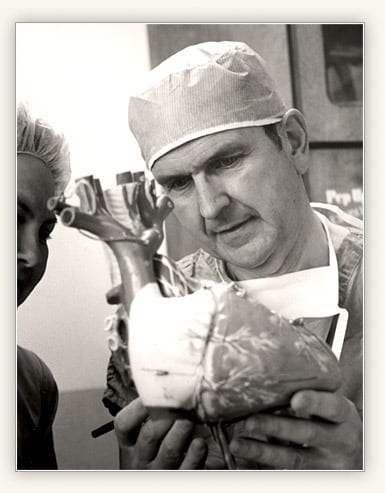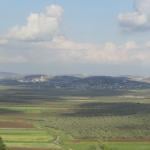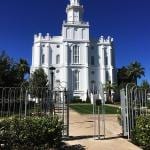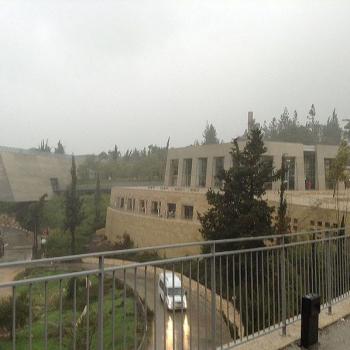
I was browsing last night in W. H. Lewis, ed., Letters of C. S. Lewis (New York and London: Harcourt Brace Jovanovich, 1966), when I came across the following passage, which I don’t recall having ever noticed before. It’s an excerpt from a letter “To a Lady” (otherwise unidentified by the editor) that is dated 28 October 1961, slightly more than two years before Lewis’s own death on 22 November 1963 (the same day on which Aldous Huxley and John F. Kennedy also died):
I’m not well enough to answer your letter properly. . . . The nearest I can put up as a Scriptural warrant for prayers for the dead is the place in one of the Epistles about people being ‘baptized for the dead’. If we can be baptized for them, then surely we can pray for them? I’d like to give you the reference, but my Concordance is upstairs and — my heart being one of the things that is wrong with me — I’m not allowed to go upstairs. (300)
As many Latter-day Saints could also do, I’m able to help here. The reference is, of course, to Paul’s first letter to the Saints at Corinth, which, for the sake of freshness, I give here in the New International Version of the Bible:
Now if there is no resurrection, what will those do who are baptized for the dead? If the dead are not raised at all, why are people baptized for them? (1 Corinthians 15:29)

In this regard, I call your attention to an article that appeared back in 2020, in Volume 39 of Interpreter: A Journal of Latter-day Saint Faith and Scholarship: “Baptized for the Dead,” written by Kevin L. Barney:
Abstract: This thorough treatment of the mention of baptism for the dead in 1 Corinthians 15:29 gives a meticulous analysis of Paul’s Greek argument, and lays out the dozens (or perhaps hundreds) of theories that have been put forth with respect to its interpretation. Barney concludes that “the most natural reading” and the “majority contemporary scholarly reading” is that of “vicarious baptism.” Therefore, “the Prophet Joseph Smith’s reading of the passage to refer to such a practice was indeed correct.”
[Editor’s Note: Part of our book chapter reprint series, this article is reprinted here as a service to the LDS community. Original pagination and page numbers have necessarily changed, otherwise the reprint has the same content as the original.
See Kevin L. Barney, “Baptized for the Dead,” in “To Seek the Law of the Lord”: Essays in Honor of John W. Welch, ed. Paul Y. Hoskisson and Daniel C. Peterson (Orem, UT: The Interpreter Foundation, 2017), 9–58. Further information at https://interpreterfoundation.org/books/to-seek-the-law-of-the-lord-essays-in-honor-of-john-w-welch-2/.]
I’ve long liked a brief video (now, of course, slightly dated) explaining “Why Mormons Build Temples.” At about the 1:16 mark, the late Krister Stendahl — an eminent New Testament scholar, as well as a former bishop of Stockholm in the (Lutheran) Church of Sweden and a former dean of Harvard Divinity School — has some extraordinarily positive and appreciative things to say about the Latter-day Saint practice of baptism for the dead.
I wrote about Professor Stendahl and his view of vicarious baptisms in an article that appeared in Meridian Magazine back in 2023: “Prominent Lutheran Leader has “Holy Envy“ for Baptisms for the Dead.”
The practice of performing baptisms on behalf of the dead has, from time to time, been portrayed in the news media and ferociously denounced on the web as unbiblical, occultic, ghoulish, bizarre, shameful, vicious, exploitative, anti-Semitic, immoral, imperialistic, arrogant, hateful, and possibly illegal, A notable case of such treatment, to choose just one specific example, occurred several years ago when the odious Keith Olbermann (at the time still a political commentator for MSNBC) pronounced President Thomas S. Monson “one of the worst people in the world” (right up there, I suppose, with Vladimir Putin, Kim Jong-un of North Korea, and Syria’s Bashar al-Assad) for presiding over the practice. It wouldn’t be a bad thing, given such criticisms, if believing members of the Church and their friends were to give the little “Why Mormons Build Temples” video, and Professor Stendahl’s wonderfully affirmative remarks, even wider circulation on the Web and via e-mail than they have already had.

My earliest temple memories are of performing proxy baptisms in the Los Angeles California Temple. That experience made a deep impression on me that I have never altogether forgotten. I had a strong sense, during my time in the temple baptistry, of the closeness of the dead and of the other side of the veil. I felt acutely that I was on the threshold of another world, adjacent to this one but distinct from it, a world of peace and light and holiness.

Here’s an inspiring story for Mother’s Day (or, for that matter, for any other day): “How a prayerful surgeon — Dr. Russell M. Nelson — helped ensure many joyful Mother’s Days for BYU coach Heather Olmstead and her family: Prayer, faith, family and gratitude define annual holiday for the Olmsteads — one of the first families of Latter-day Saint volleyball”
This article, though, is perfectly suited to Mother’s Day: “Perspective: Motherhood is the greatest power in the world: As a new mother, I had given up and lost some things. And yet paradoxically, I had also found a level of connection, purpose, and meaning I had never known. It filled me.”
And, lastly, during our Elders Quorum meeting today, among other things, we watched this 2015 General Conference talk entitle “Behold Thy Mother” — not quite seventeen minutes in length — delivered by Elder Jeffrey R. Holland of the Quorum of the Twelve Apostles. I found it very moving:













